We are very proud to announce the new stable release of OGGM, version 1.4.0! It is the achievement of more than one year of work, with many improvements (and a bit of struggle) on the way.
This release, more than any other before, reinforces the conversion of OGGM from a “glacier model” to a “modelling framework”, allowing multiple workflows and parameterizations to co-exist and be compared, while still relying, for example, on the same input data for boundary conditions, or on the same ice dynamics model for glacier evolution simulations.
🚀 Now let us highlight some of the main improvements you’ll find in OGGM 1.4!
New tutorials website
We are now using jupyter-book to display our notebook tutorials at http://oggm.org/tutorials.
The main advantage of this new system is that readers can now see the rendered notebooks (and the expected output) without having to run the tutorials themselves. It is faster to find a recipe for what you are looking for, and copy-paste bits of code from the website.
It is also easier than ever to start a notebook in your browser with MyBinder:
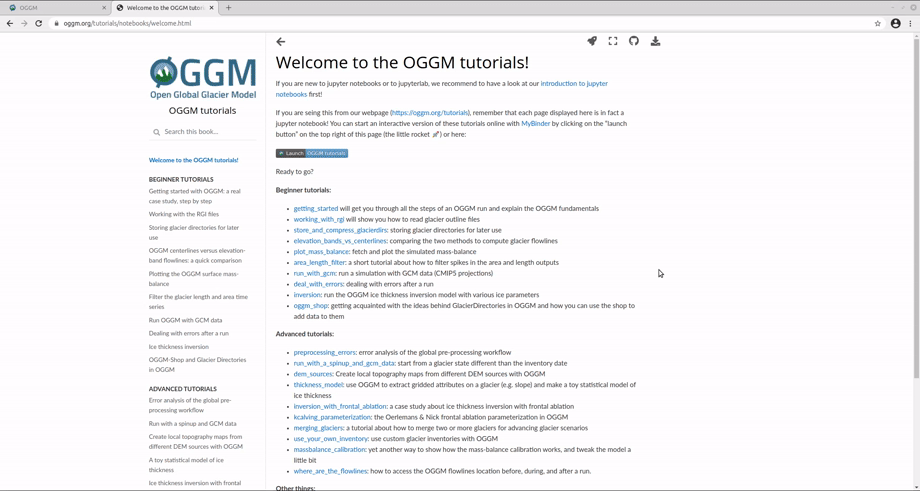
New way to compute the glacier flowlines
Glaciers in OGGM are represented as “1.5D flowline glaciers”, which is a simplified, computationally efficient way to simulate ice flow.
As of v1.4, users can now choose between two different methods to compute the flowlines: from multiple geometrical centerlines (the default), or (new!) from binned elevation bands (called “elevation band flowlines” in the model workflow).
Elevation band flowlines are computed after Huss & Farinotti 2012 and the algorithm description in Werder et al, 2020 and are a simpler, non-geometrical but robust way to convert 2D glacier geometries into flowlines.
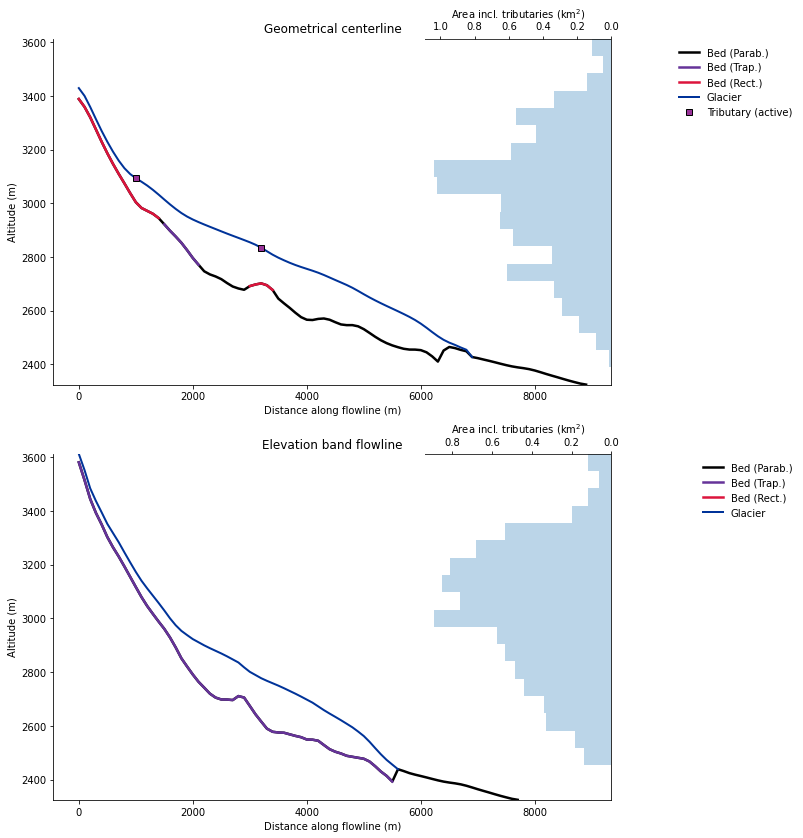
Once computed, both representations are programmatically equivalent for OGGM: both can be used by the model in the exact same way. Visit our documentation for a method description and an in-depth discussion of the strengths and weaknesses of both options.
OGGM-Shop

OGGM v1.4 has a new module called shop
(from oggm import shop).
OGGM-Shop
allows user to write a “shopping list” of data that they wish to add to their glacier directories.
“Glacier directories” are the central data structure in OGGM, and contain all kinds of glacier specific data. With OGGM-Shop, users can now automatically add additional data to their directories, such as ice velocities from ITS_LIVE or ice thickness data from the consensus ice thickness estimate.
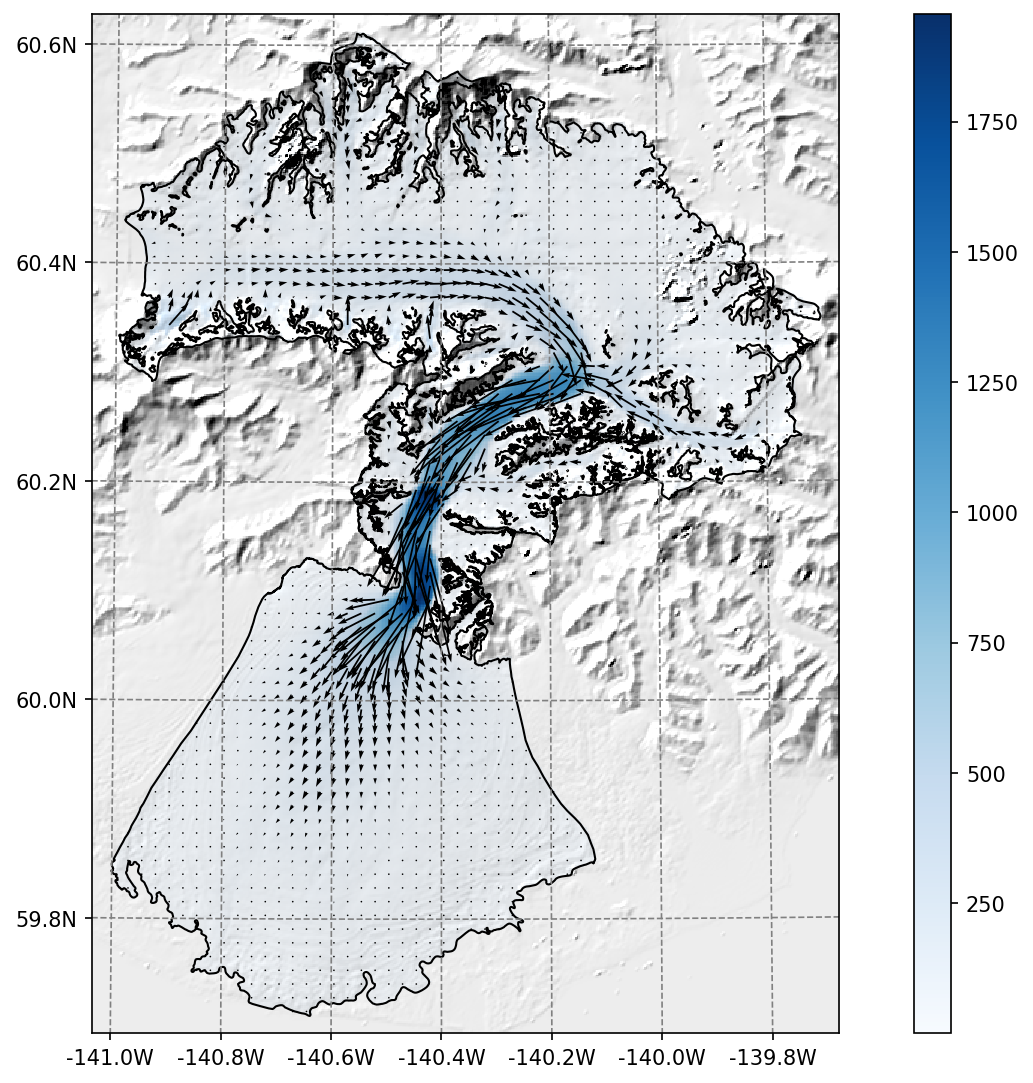
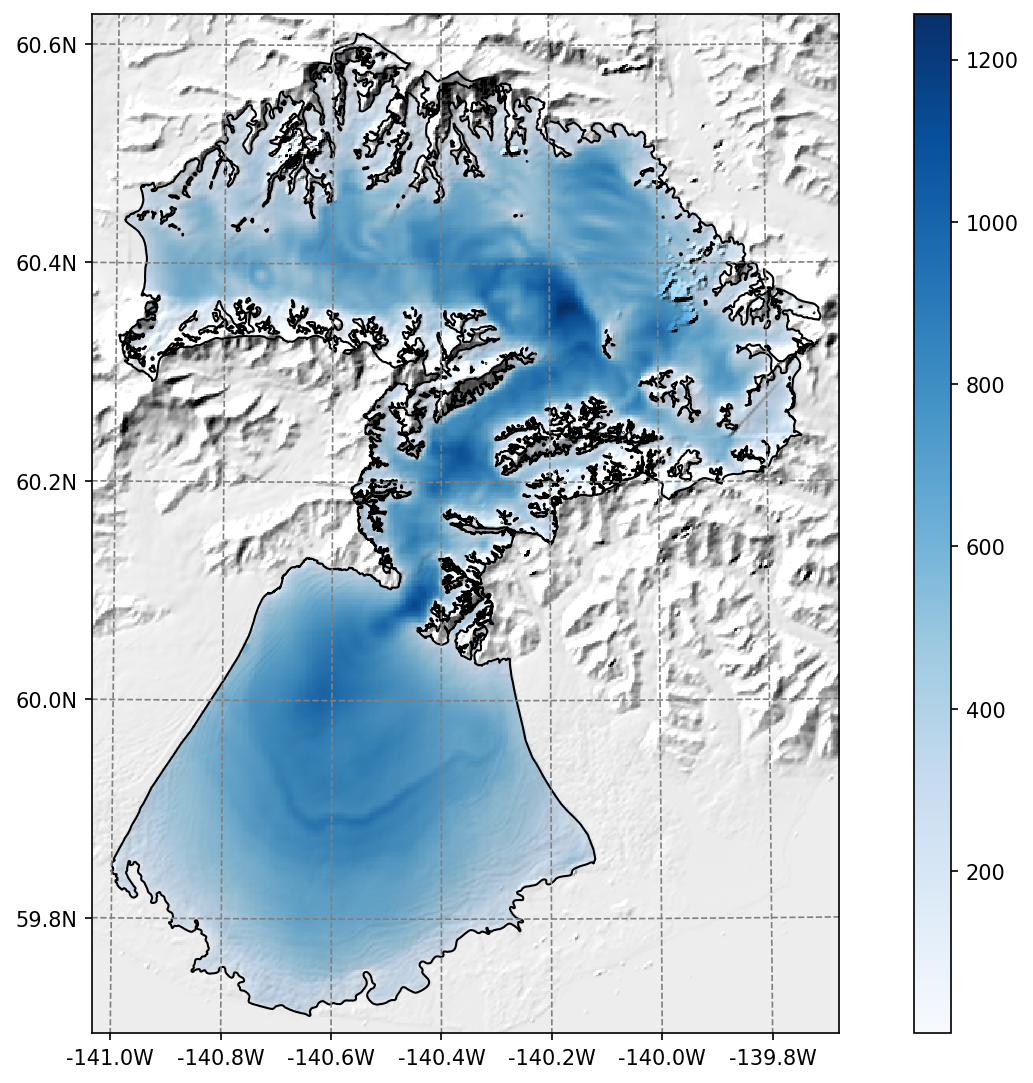
OGGM-Shop also contains several other datasets, among others RGI-TOPO or a number of pre-processed glacier directories, ready to be used by OGGM.
New members of the OGGM ecosystem: PyGEM and OGGM-VAS
PyGEM is a state-of-the art glacier evolution model developed by David Rounce and colleagues. It has a much more advanced calibration strategy than OGGM, and additional physics in its mass-balance model. Over the last year, PyGEM and OGGM developers have worked hard to make their models compatible: PyGEM is now able to run with OGGM’s ice dynamics model! More info on this collaboration will be advertised soon – stay tuned!
OGGM-VAS is a python re-implementation of the well known Marzeion et al., 2012 model, based on Volume Area Scaling (hence the name). This re-implementation is strictly equivalent to the original 2012 model, but adopts “the OGGM workflow”. This means that both models now also agree on the boundary conditions and climate data. OGGM-VAS has been developed by Moritz Oberrauch during his master thesis.
Assets & downloads
With OGGM v1.4, we will start to provide more derived products from OGGM (some of them being around since a long time but not really advertized). Visit Assets & downloads for an overview. We will eventually provide glacier projections as well (when they have been peer-reviewed), but currently we can highlight some tabular data statistics from glaciers, or shapefiles of the glacier centerlines available at the global scale (image below).
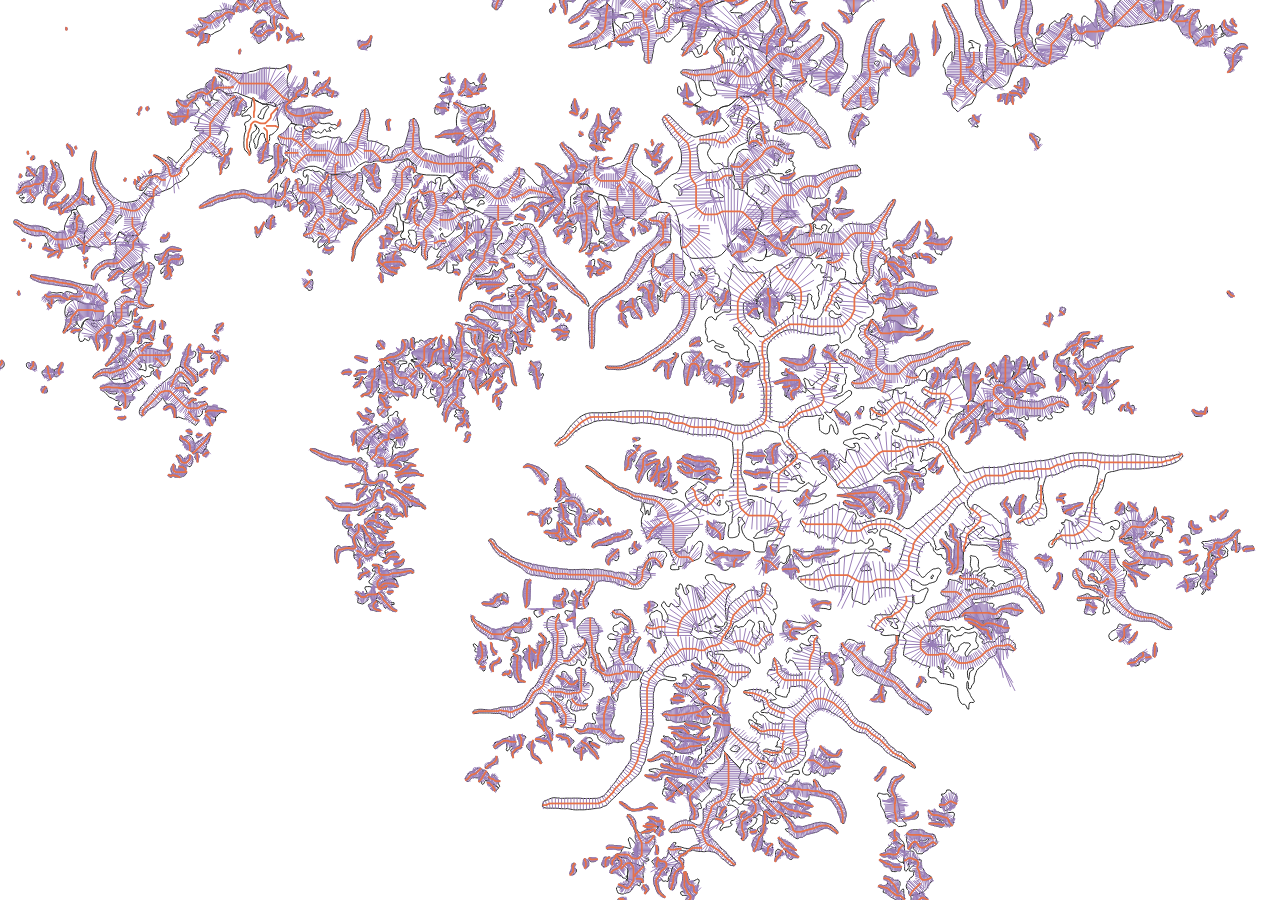
Regional calibration routines
As of OGGM v1.4, users can now calibrate the ice dynamics parameters (Glen A and sliding) to match other ice thickness products, most notably the consensus ice thickness estimate. This can be applied on any number of glaciers, but we recommend to apply this calibration on large number of glaciers, for example at the regional scale.
Additionally, users can now bias-correct OGGM’s standard mass-balance model to match regional geodetic estimates, as provided for example by Zemp et al., 2019.
Visit our documentation for more information!
OGGM-Hub
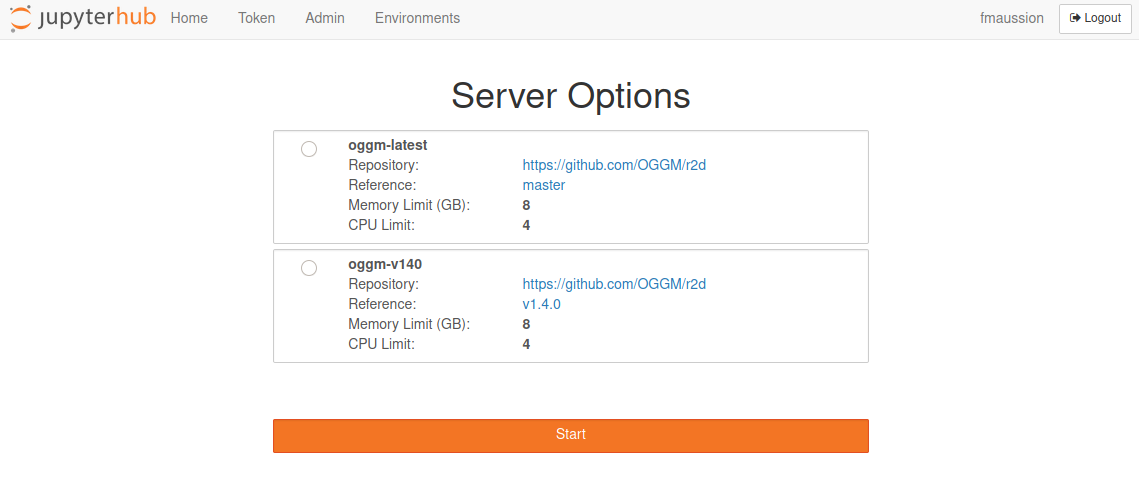
hub.oggm.org is our own JupyterHub deployment of OGGM on our servers in Bremen. It works similarly to MyBinder (see try OGGM online) but it is bound to a username (you’ll need an account) and is therefore persistent (your files are saved between sessions). It also gives you access to much more computing resources! It is a great way to learn OGGM online, and even to do simple catchment scale simulations.
In order to be able to log in, you will need to have a (free) user account. It is super easy, just write us an email if you want to try it out!
And much more!
There have been many other changes to the model too numerous to be listed here, such as the addition of a calving parameterization. Visit our what’s new section if you want to know more, or join us on our slack channel (write us an email to register)!
List of contributors
Thanks to all who have contributed to this release!
- Anouk Vlug
- Beatriz Recinos
- David Rounce*
- Julia Eis
- Li Fei*
- Lilian Schuster*
- Lizz Ultee*
- Matthias Dusch
- Nicolas Champollion
- Sarah Hanus*
- Timo Rothenpieler
(first time contributors are indicated with a *)